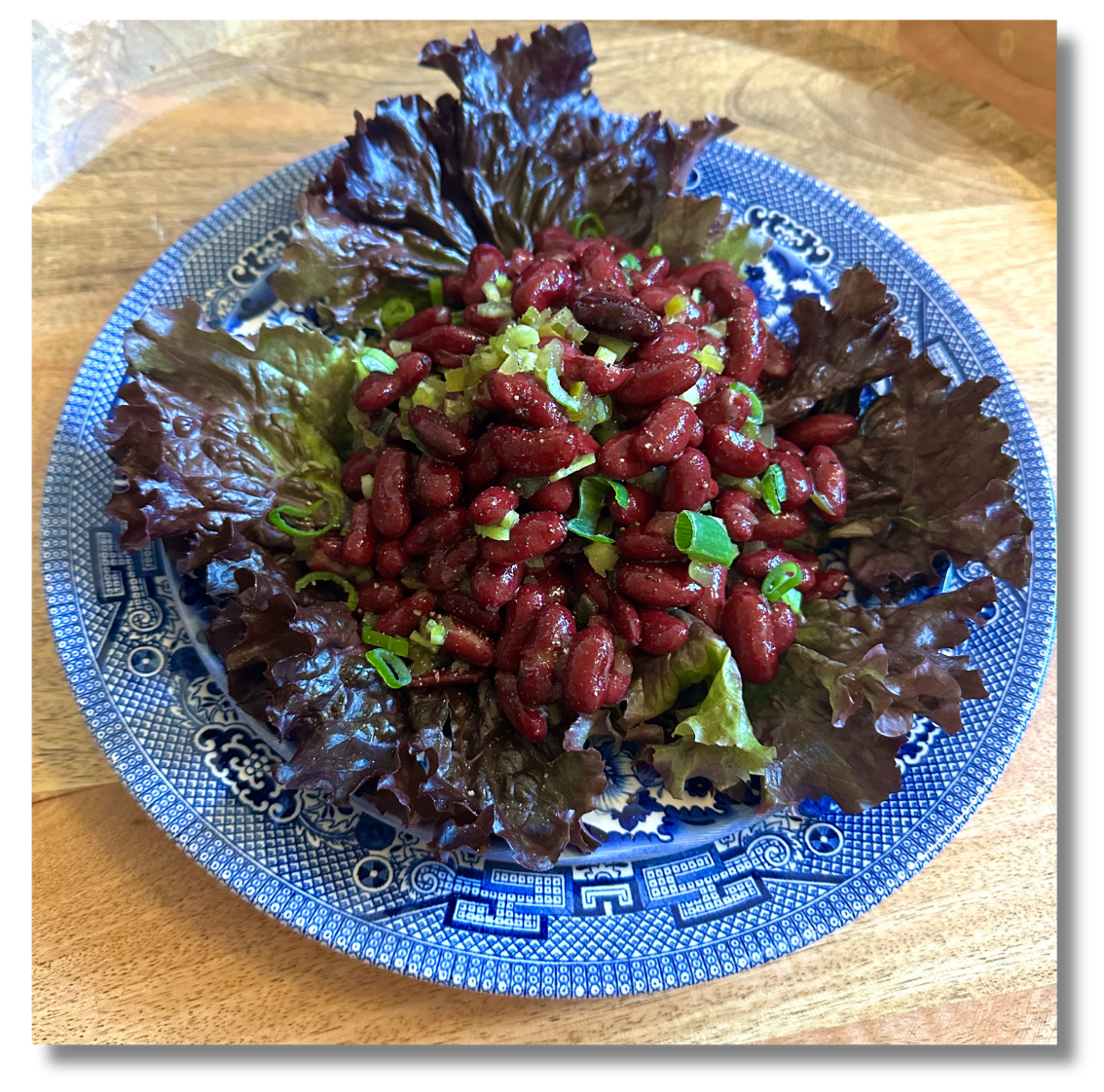It’s been three straight weeks of cake testing over here.
I’ve baked lemon cakes, butter cakes, sponge cakes. Egg whites have been whipped into pillowy, marshmallow frostings. Coconut has fallen like confetti. And I’ve had to pinch myself more than once because I am doing exactly what I’ve always dreamed of: bringing Estella’s 100-year-old cookbook collection into a modern kitchen.
But wow. Did I know it would involve this much sugar?
So, answering the call of warm weather (finally) and the burst of blooms in the garden, this week I’m taking a break from sugary confections and reaching for something green. Something clean and unfussy.
It’s time for salad.
I turned to Estella’s stash and found The Heinz Book of Salads (1925). It sounded promising, but I was cautious. “Salad” in vintage cookbooks can mean anything from molded gelatin to mayonnaise-heavy concoctions with odd ingredients suspended inside.
But this slim little book surprised me.
It offered exactly what I was craving: 100 salad recipes, three foundational dressings, and a deep appreciation for fresh produce. In this world, vegetables aren’t diet food. Instead, they’re a form of hospitality. A chilled lettuce leaf is elegance. And in the introduction, hosts are reminded that serving a salad at luncheon is the height of refinement.
Yes, there are plenty of nods to Heinz’s 57 products—white and malt vinegar for the dressings, mini gherkins chopped into bean salad—but beyond the branding lies a smart, flexible guide to making vegetables sing.
In the spring and summer of 1925, Estella was a busy teacher and wife. She administered county exams, attended summer sessions at the teacher’s college in Lewiston, and still managed to host parties and social events—all documented in the local newspaper, of course.
I can imagine her returning home in the heat of a Palouse summer, craving simplicity. Something light. Something not cake (though her fondness for it is well-documented in her collection). Something like this salad book.
Just like Estella might have done when using her Book of Salads, I started with the three foundational dressings—and chose to test the French Dressing first.
I love making salad dressings. It’s a tiny flavor experiment: mustard, lemon juice, salt, pepper, maybe a bit of honey or sugar, finished with a drizzle of olive oil. Quick and easy.
When I saw the French Dressing recipe in the Heinz Book of Salads started with white vinegar—the same stuff I use to clean linens—I raised an eyebrow. But I wanted to channel Estella, so I leaned in. No fancy vinegar. Just white vinegar, olive oil, sugar, salt, and paprika.
I put it all in a jar, as directed, and shook it up.
And you know what?
It worked. The dressing was simple, balanced, and better than expected.
The book even offers ways to adapt it: add mustard (Mustard Dressing), toss in fresh chopped vegetables (Parisienne), or explore a dozen other variations. It’s an open invitation to play and adapt flavors.
On to the salads. I selected two to test. One was the ideal example of ease and freshness. The other, a trip to the past.
First up: Romaine with Endive.
I followed the instructions and arranged romaine leaves nestled inside endive stalks, finishing with strips of bell pepper and a drizzle of French Dressing. It was exactly what I’d been craving: color, crispness, and crunch.
Next: Kidney Bean Salad.
I had a can of kidney beans on hand, so I gave this a try. The recipe is simple—beans, celery, and chopped sweet pickles, left to marinate in French Dressing before serving. The purple and green colors were lovely together. The flavor? Clean, but maybe a bit too sweet for me. The pickles took over. Still, with a little tweaking—the addition of a spoonful of mustard, a handful of herbs, a squeeze of lemon—it has real potential. And I love how humble it is. No frills. Just beans, dressed up and invited to a 1920s party.
As someone who proudly believes butter, sugar, and flour are a love language, I didn’t expect to find so much joy in making salads.
But this week reminded me: sweetness isn’t the only way to celebrate.
Sometimes what we need is a cool, crisp pause—served in spring colors, lightly dressed, and shared.
What do you reach for when you need a reset—body or spirit?
Is it soup, salad, toast, tea?
I’d love to hear your story.







If it's possible for words to be spunky and vivacious, then this perfectly decribes your style of writing. No surprise there as it also reflects your adorable personality. The salad recipes and photos thereof are nothing less than tantalizingly amazing.
"Sometimes what we need is a cool, crisp pause—served in spring colors, lightly dressed, and shared."
What a beautiful way to write about food, Julie.